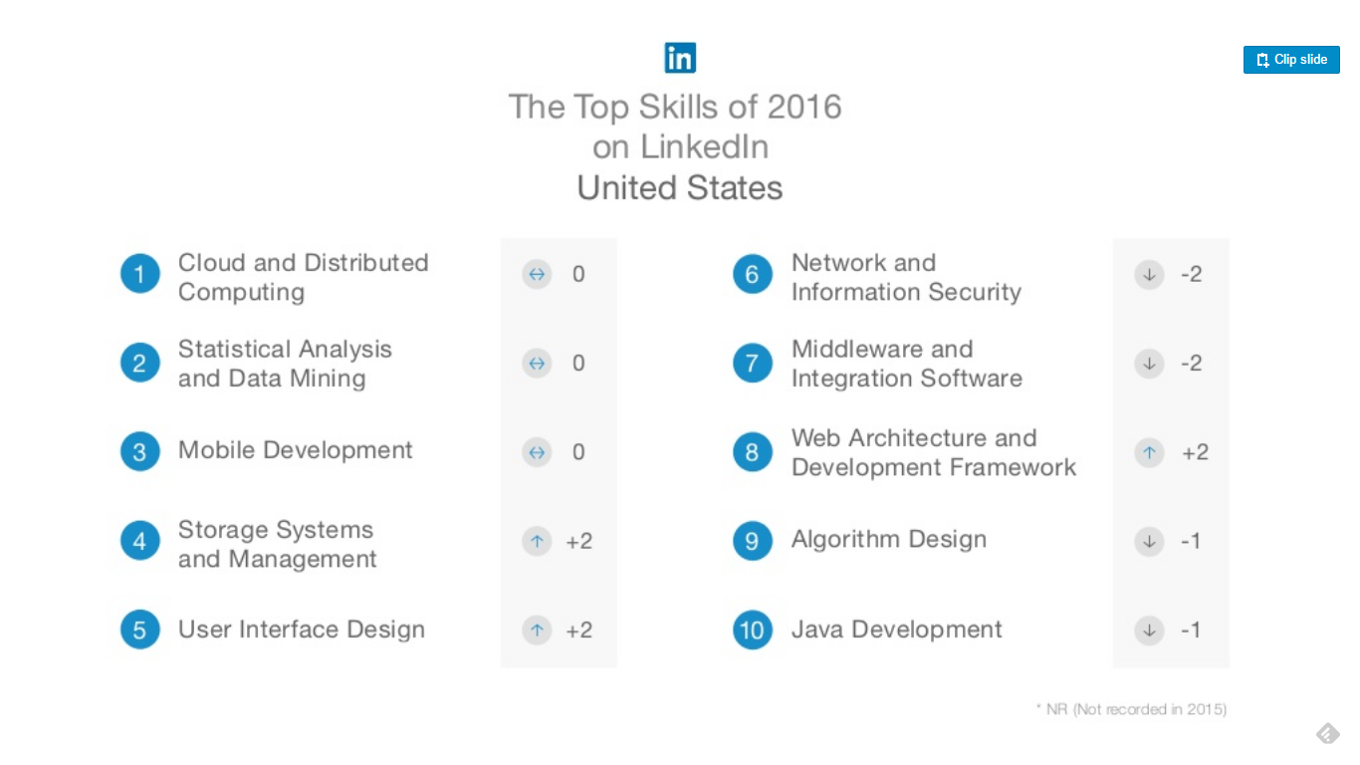In what has become an annual tradition on the blog, as beloved as the lighting of the Rockefeller Center Christmas tree, the running of the bulls in Pamplona, or me passing out on the sofa in a turkey/stuffing coma each Thanksgiving, I wanted to offer my quick reminder that the world of LinkedIn has only a partial, if not passing, resemblance to the real world of work, workplaces, and the kinds of jobs most people have.
What prompts this regular reflection and reminder? As in years past, (here is what I wrote about this last winter), LinkedIn has released what they call 'The Top Skills That Can Get You Hired in 2017', based on their data set of member profiles, job posting activity, and their assessment of the candidate skills that were more likely to generate recruiter interest and hiring activity. They publish this list of 'top' skills both globally, and for a selection of countries and more or less the narrative that follows is something along the lines of 'If you want to get hired next year, you should try to acquire one (or more) of these skills.'
Here is the list of these 'top' skills for the USA for 2017, per LinkedIn:

As has been the case in the last couple of years, these 'hot' skills are dominated by the latest in IT trends and innovations. Cloud computing, user interface, algorithm design, etc., are all skills (and roles), that have certainly seen an increase in employer demand, and is often reported, can be difficult to find in candidates. So simple supply (which is not enough), and demand, (which continues to increase), for these skills naturally make them 'hot' and the folks that possess them remaining in demand.
Makes sense. Good to know. Interesting to think about if you are just starting your career and want to have at least some level of comfort about your chances of employment.
But as I like to point out, and did the last time LinkedIn shared with us what was 'hot', these skills, or said slightly differently, the kinds of jobs that require these skills, still make up a really, really small percentage of overall employment in the USA, and are not the ones that the vast majority of people are doing.
Here's the latest data that is available from our pals at the Bureau of Labor Statistics on 'Major Occupational Groups as a Percentage of Employment', (from 2015):
Did you see the grouping for 'Computer and Mathematical', where the majority of jobs that required most of the 2017 LinkedIn 'hot' skills would typically reside?
It is down towards the bottom of the graph just after 'Personal care and service' and before 'Healthcare support'. If you go to the actual BLS data, 'Computer and Mathematical' makes up 2.9% of all jobs in the USA, about the same as it has been the last couple of years.
Even allowing for the fact that some of the 'hot' skills would be in demand in other general employment categories, is still stands to reason that just about all of the jobs where these skills are being sought out for represent, still, a sliver of the US labor market, and do not reflect the jobs that the vast majority of people are actually doing, (and will be doing for some time).
Sure, it is trendy to think that the LinkedIn skills represent the future of work, and perhaps they probably do, and I would encourage anyone, especially younger folks to think about pursuing them, but these skills don't really represent the 'present' of work, not in a substantial way anyway.
LinkedIn is a fantastic business, a staggering success, and not at all like the real world where the overwhelming majority of workers reside.
Have a fantastic weekend And don't spend so much time on LinkedIn.